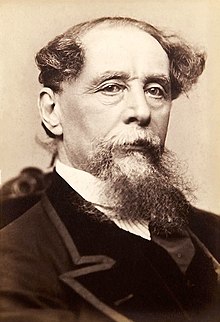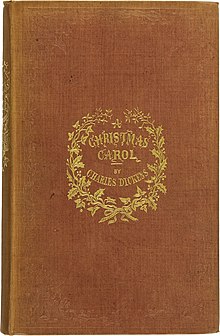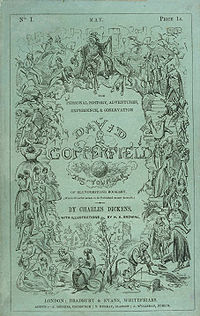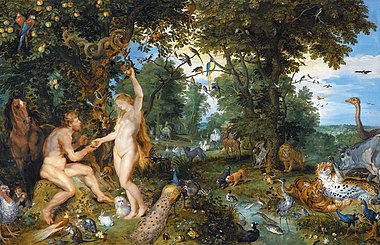Bible
 The Bible is a collection of texts sacred in Judaism and Christianity. It is a collection of scriptures written at different times by different authors in different locations. Jews and Christians consider the books of the Bible to be a product of divine inspiration or an authoritative record of the relationship between God and humans.
The Bible is a collection of texts sacred in Judaism and Christianity. It is a collection of scriptures written at different times by different authors in different locations. Jews and Christians consider the books of the Bible to be a product of divine inspiration or an authoritative record of the relationship between God and humans.Attitudes towards the Bible also vary amongst Christian groups. Roman Catholics, Anglicans and Eastern Orthodox Christians stress the harmony and imposola scriptura, or scripture alone. This concept arose during the Protestant Reformation, and many denominations today continue to support the use of the Bible as the only source of Christian teaching.
rtance of the Bible and sacred tradition, while Protestant churches focus on the idea of
With estimated total sales of over 5 billion copies, the Bible is widely considered to be the best selling book of all time. It has estimated annual sales of 100 million copies, and has been a major influence on literature and history, especially in the West where the Gutenberg Bible was the first mass-printed book. It was the first book ever printed using movable type.
Old Testament
The Old Testament is the first section of the Christian Bible, based primarily upon the Hebrew Bible, a collection of religious writings by ancient Israelites. It is the counterpart to the New Testament, the second portion of the Christian Bible. The Old Testament canon varies between Christian Churches; Protestants and Latter-Day Saints accept only the books found in the canon of the Hebrew Bible, dividing them into 39 books, while the Catholic, Eastern Orthodox, and Oriental Orthodox Churches accept somewhat larger collections of writings.The Old Testament consists of many distinct books written, compiled, and edited by various authors over a period of centuries. It is not entirely clear at what point the parameters of the Hebrew Bible, the basis for the Christian Old Testament, were fixed. Some scholars have opined that the canon of the Hebrew Bible was established already by about the 3rd century BC, or even later.
The books of the Old Testament can be broadly divided into several sections:
1) the first five books (Genesis, Exodus, Leviticus, book of Numbers and Deuteronomy) or Pentateuch (Torah)
2) the history books telling the history of the Israelites, from their conquest of Canaan to their defeat and exile in Babylon
3) the poetic and "Wisdom" books dealing, in various forms, with questions of good and evil in the world
4) and the books of the biblical prophets, warning of the consequences of turning away from God.
The Old Testament stresses the special relationship between God and his chosen people, Israel, but includes instructions for proselytes as well. This relationship is expressed in the biblical covenant (contract) between the two, received by Moses. The law codes in books such as Exodus and especially Deuteronomy are the terms of the contract: Israel swears faithfulness to God, and God swears to be Israel's special protector and supporter.
Binding of Isaac
At some point in Isaac's youth, Abraham was commanded by God to offer his son up as a sacrifice in the land of Moriah. The patriarch traveled three days until he came to the mount that God told him of. He commanded the servants to remain while he and Isaac proceeded alone into the mount. Isaac carried the wood upon which he would be sacrificed. Along the way, Isaac asked his father where the animal for the burnt offering was, to which Abraham replied "God will provide himself a lamb for a burnt offering". Just as Abraham was about to sacrifice his son, he was interrupted by "the angel of the LORD", and he saw behind him a "ram caught in a thicket by his horns", which he sacrificed instead of his son. For his obedience he received another promise of numerous descendants and abundant prosperity. After this event, Abraham went to Beersheba. (Genesis 22:1–19)Abraham
The first of the three biblical patriarchs. His story, told in chapters 11 through 25 of the Book of Genesis, plays a prominent role in Judaism, Christianity, Islam and the Bahá'í Faith.
Isaac
The second son of Abraham, the only son Abraham had with his wife Sarah. According to the Genesis narrative, Abraham brought Isaac to Mount Moriah, where, at God's command, Abraham built a sacrificial altar to sacrifice Isaac.
Original sin
Original sin, also called ancestral sin, is the Christian doctrine of humanity's state of sin resulting from the fall of man, namely the sin of consuming from the tree of knowledge of good and evil, stemming from Adam's rebellion in Eden. This condition has been characterized in many ways, ranging from something as insignificant as a slight deficiency, or a tendency toward sin yet without collective guilt, referred to as a "sin nature", to something as drastic as total depravity or automatic guilt of all humans through collective guilt.The concept of original sin was first alluded to in the 2nd century by Irenaeus, Bishop of Lyons in his controversy with certain dualist Gnostics. Other church fathers such as Augustine also developed the doctrine, seeing it as based on the New Testament teaching of Paul the Apostle (Romans 5:12–21 and 1 Corinthians 15:22) and the Old Testament verse of Psalm 51:5. Tertullian, Cyprian, Ambrose and Ambrosiaster considered that humanity shares in Adam's sin, transmitted by human generation. Augustine's formulation of original sin was popular among Protestant reformers, such as Martin Luther and John Calvin, who equated original sin with concupiscence, affirming that it persisted even after baptism and completely destroyed freedom. The Jansenist movement, which the Catholic Church declared to be heretical, also maintained that original sin destroyed freedom of will.
Fresco
Charles Dikens
 An English writer and social critic. He created some of the world's best-known fictional characters and is regarded as the greatest novelist of the Victorian era. His works enjoyed unprecedented popularity during his lifetime, and by the twentieth century critics and scholars had recognised him as a literary genius. His novels and short stories enjoy lasting popularity.
An English writer and social critic. He created some of the world's best-known fictional characters and is regarded as the greatest novelist of the Victorian era. His works enjoyed unprecedented popularity during his lifetime, and by the twentieth century critics and scholars had recognised him as a literary genius. His novels and short stories enjoy lasting popularity.Works:
 A Christmas Carol in Prose, Being a Ghost-Story of Christmas, commonly known as A Christmas Carol, is a novella by Charles Dickens, first published in London by Chapman & Hall on 19 December 1843. The novella met with instant success and critical acclaim. A Christmas Carol tells the story of a bitter old miser named Ebenezer Scrooge and his transformation into a gentler, kindlier man after visitations by the ghost of his former business partner Jacob Marley and the Ghosts of Christmas Past, Present and Yet to Come.
A Christmas Carol in Prose, Being a Ghost-Story of Christmas, commonly known as A Christmas Carol, is a novella by Charles Dickens, first published in London by Chapman & Hall on 19 December 1843. The novella met with instant success and critical acclaim. A Christmas Carol tells the story of a bitter old miser named Ebenezer Scrooge and his transformation into a gentler, kindlier man after visitations by the ghost of his former business partner Jacob Marley and the Ghosts of Christmas Past, Present and Yet to Come.The book was written at a time when the British were examining and exploring Christmas traditions from the past as well as new customs such as Christmas cards and Christmas trees. Carol singing took a new lease on life during this time. Dickens's sources for the tale appear to be many and varied, but are, principally, the humiliating experiences of his childhood, his sympathy for the poor, and various Christmas stories and fairy tales.
A Christmas Carol remains popular—having never been out of print—and has been adapted many times to film, stage, opera, and other media.
| Movie |
 David Coperfeild is the eighth novel by Charles Dickens. It was first published as a serial in 1849–50, and as a book in 1850. Many elements of the novel follow events in Dickens' own life, and it is probably the most autobiographical of his novels. In the preface to the 1867 edition, Dickens wrote, "like many fond parents, I have in my heart of hearts a favourite child. And his name is David Copperfield."
David Coperfeild is the eighth novel by Charles Dickens. It was first published as a serial in 1849–50, and as a book in 1850. Many elements of the novel follow events in Dickens' own life, and it is probably the most autobiographical of his novels. In the preface to the 1867 edition, Dickens wrote, "like many fond parents, I have in my heart of hearts a favourite child. And his name is David Copperfield."Movie: Meet me in St. Louise
A 1944 musical film from Metro-Goldwyn-Mayer which tells the story of an American family living in St. Louis at the time of the Louisiana Purchase Exposition World's Fair in 1904.Garland debuted the standards "The Trolley Song", "The Boy Next Door", and "Have Yourself a Merry Little Christmas", all of which became hits after the film was released. Arthur Freed, the producer of the film, also wrote and performed one of the songs.
- Sam Smith- Have Yourself a Merry Little Christmas



沒有留言:
張貼留言